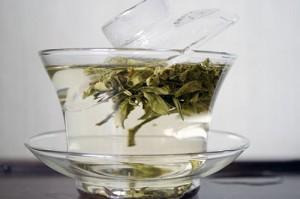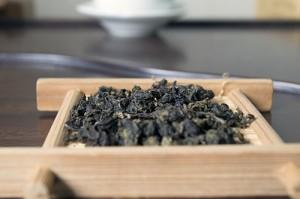Earlier we talked about China’s Top 10 Famous Teas which was based on the list compiled by China Agricultural Committee in 1959.
While there are numerous iterations of this, the 1959 remains the most authoritative and influential.
More than half a century on, let us take another look at this list.
Criteria
Representative of the Diversity of Chinese Teas
China is the only nation to produce teas stretching all 6 basic categories of tea as well as modified teas such as scented teas, handcrafted teas and compressed teas.
Any top 10 list should be representative of the diversity- though all-encompassing is not realistic, at least fairly indicative.
Hence one would expect most categories to be represented, in some form or fashion.
Quality

Hence certain famous varieties like Chun Mei and Gunpowder may be globally renowned but they are not classified as ‘famous tea’ according to Guo Biao or official standards.
Ubiquitous
Famous would mean well-known, hence while certain teas may be exquisite, due to their relative lack of fame, they might be excluded.
This would include varieties like Anji Baicha, Mengding Ganlu and Dinggu Dafang, all of which I personally think highly of but I would not place them in the top 10 for this reason.
Preamble Aside
Let us look at the existing list again:
i) Xihu Longjing
ii) Dongting Biluochun
iii) Xinyang Maojian
iv) Junshan Yinzhen
v) Lushan Yunwu
vi) Huangshan Maofeng
vii) Wuyi Yancha
viii) Luan Guapian
ix) Anxi Tieguanyin
x) Qimen Hongcha
The Untouchables

You simply could not put together a list of Chinese teas that exclude them and expect any credibility.
Even a casual Chinese tea drinker would be able to name these 3 teas with minimal difficulty.
Next up
While their cases are not as clear cut as the 3 above, I would argue the following 3 teas have made very compelling cases for themselves:
i) Huangshan Maofeng
- possibly the 3rd best known green tea but unquestionably the best known baked green tea.
ii) Wuyi Yancha
- distinctive ‘yanyun’ and Dahongpao is the stuff of top officials, how can you exclude Wuyi Yancha.
iii) Qimen Hongcha
- It may not be the first black tea (that would be Zhengshan Xiaozhong) but it is certainly the best-travelled. Not to mention the fact that Qimen gongfu method is more representative of typical Chinese black teas than Zhengshan Xiaozhong.
The Challengers
In the 50 years that transpired since then, I would argue the landscape has changed quite a bit.
i) Puer

In the past Puer was cheap tea, literally. Even accounting for nominal value of money, it was cheap in its time.
Certainly no one would think of paying 5 digits for a tong, let alone a bing in those days.
The past 2 decades have been very kind to Puer though, particularly with Southern Chinese (and South East Asia) maturing, Puer has become the stuff of connoisseurs and a worthy inclusion to the Top 10 list.
ii) Silver Needles
White tea has emerged in popularity over the past decade and Silver Needles are the highest grade of white tea. This fact alone merit consideration, not to mention how Silver Needles delight casual and experienced tea lovers alike with its brisk and sweet taste.
iii) Jasmine Tea
A fact that eludes many is that in Northern China, the tea of choice is generally scented tea, especially jasmine tea. This is commonly attributed to its cold and arid environment as opposed to the humidity of the south where green tea would be an excellent foil to.
Given that lists like this should be a fairer representative of the preferences of the entire nation as opposed to southern and coastal China, inclusion of jasmine tea lend credence to the list.
iv) Dancong
This is where my oolong and Chaozhou (hi mum!) bias is showing.
But that aside, Dancong has been largely overlooked in the past because of its lower production and relatively higher prices.
However with widespread cloning from the early 80s, Dancong is no longer an obscure offering and more and more experienced tea drinkers have started to embrace it for its unique aroma and rich mouth feel.
So who are you going to take out?
While green teas constitute 70% of all teas produced in China, I would argue that there is an omission of Xinyang Maojian, Lushan Yunwu and Luan Guapian would not be THAT cardinal a sin. Well any omission is, but when you make a top 10 list of anything, there are bound to be luminaries that are overlooked.
Yes I love those teas too but I would argue Xinyang Maojian and Lushan Yunwu are not altogether that different (relatively speaking) from the roasted teas while Luan Guapian would not have the same level of ubiquity as those replacing it.
It is all down to….
Puer would be a shoo-in.
If I had to pick 3 from Junshan Yinzhen, Silver Needles, Jasmine Tea and Dancong, on personal preference I would drop Jasmine tea.
However in terms of influence, it would be Dancong that would miss the cut.
In terms of diversity, despite being the only yellow tea, I would argue the other 3 have a more distinctive taste- relatively- as compared to the rest in the field.
Based on ubiquity though, I think Junshan Yinzhen suffers from not having sufficient genuine ones in the market, especially over the past 3 years when prices rocketed.
While there is a concern that Fujian would have a disproportional influence in the list- Yancha, Tieguanyin, Jasmine and Silver Needles- there is no doubt Fujian is the most diverse tea producing region in the world, being the origin of oolong, black, white and possibly scented tea as well.
All said
Revised Top 10 list
i) Xihu Longjing
ii) Dongting Biluochun
iii) Huangshan Maofeng
iv) Wuyi Yancha
v) Anxi Tieguanyin
vi) Qimen Hongcha
vii) Puer
viii) Silver Needles
ix) Junshan Yinzhen
x) Jasmine Tea
But that is for now, with its growing popularity, I foresee it is only a matter of time when Dancong gets its rightful due.
See more articles on overviews of various categories of tea
